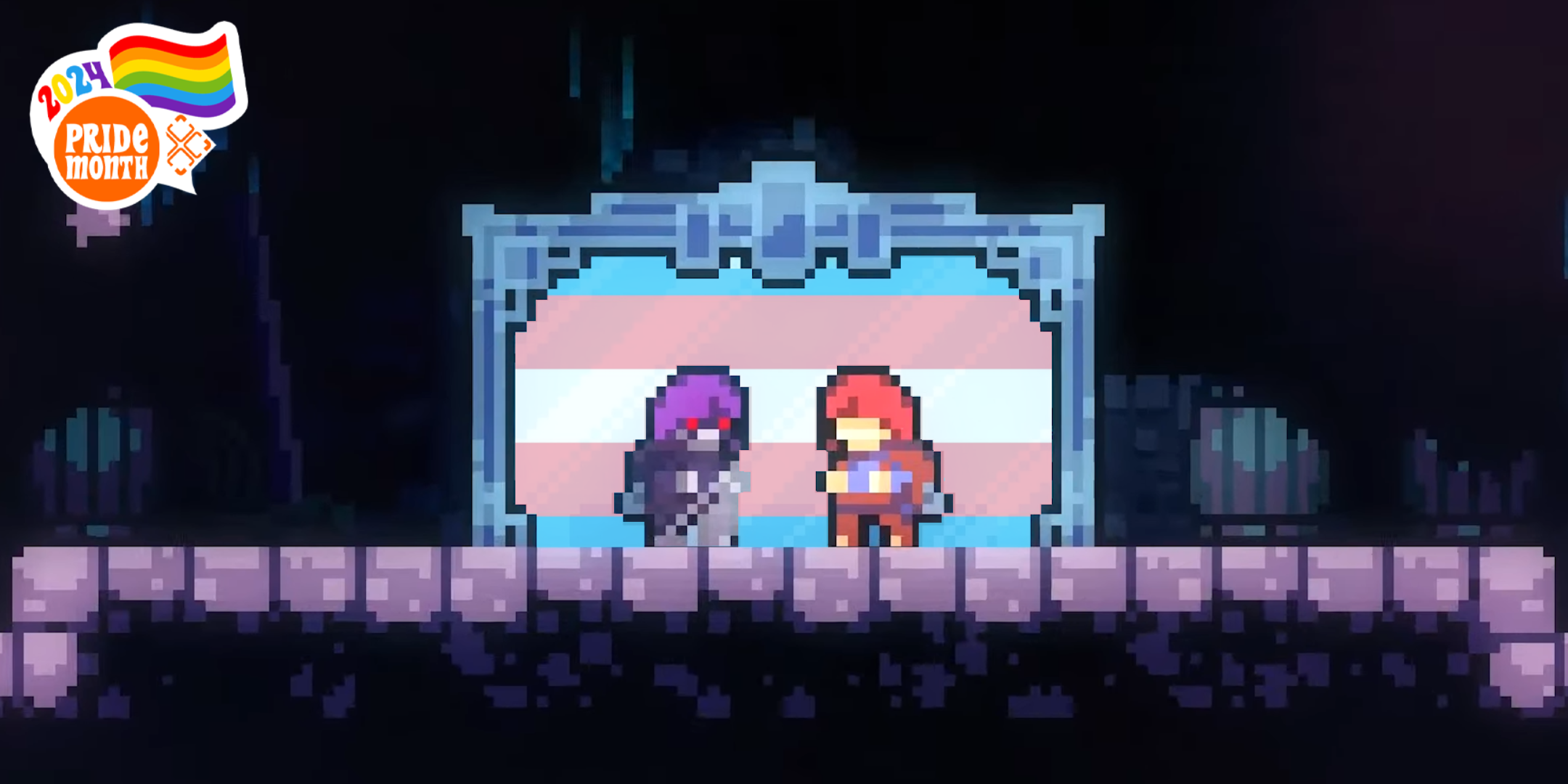Celeste And The Beauty Of Transgender Realisation In Video Games

The transgender experience is complex. Despite being the most important journey of self-discovery in many people’s lives, you might not even realise you’re already several years deep into such an adventure until significantly later in life.
As a consequence, there are myriad microcosms of this unknowing road of trans discovery that come to represent different stages along the way; as with any and all art, experiences in video games can often become inadvertent mirrors into the soul that wind up pivotal to gender self-realisation. Even if you don’t know it at the time.
Earlier this month, I opened Monster Hunter World for the first time in years after being hit by a pang of nostalgia for my hundreds of lockdown-era hours spent in Astera and Seliana. Sadly, I was jumpscared by the very masculine visage of my old Hunter staring back at me.
Back then I was so enamoured by the level of detail available in World's character creator, I strove to make a fantastical self-insert. Specifically, a version of myself circa March 2020, at which point I was ruthlessly pushing down my increasingly common gender-questioning thoughts out of fear - both for the transphobia it would almost certainly lead to, and for the terrifying truth that I would have to make about myself. My Hunter is an inadvertent snapshot of the person I used to be - someone too scared to accept who they might be, and instead choosing to put up a shield of conforming comfort.
Fast-forward to Monster Hunter Rise in 2021 and my character is a woman that looks nothing like me. I saw it as an esoteric way to make up for my previous choice. I designed this Hunter in early 2022, when I had only recently come out as non-binary and was still figuring out who I wanted to be, so it makes sense in hindsight that I would go from one extreme to the other, like I was playing the field to see what felt right.
Obviously, the first thing I did upon seeing my old Hunter in World was to remake them from scratch into a contemporary feminine representation of myself, even spending a few pounds on a customisation voucher out of utter necessity.
While my previous Hunters ranged from the two extremes of representing my earlier, ‘incorrect’ self to taking an entirely different idealised form, my current Hunter is closer to who I really am than ever. It’s painful to look back on those previous choices in various states of dysphoria-induced confusion, but I don’t think I would have made it this far without them. For a lot of trans people, tripping up as you stride towards who you truly want to be is a vital part of the experience, and how we depict ourselves in video games reflects that.
It’s also how I’ve come to realise why Seth is my favourite Street Fighter 5 character.
Originally the villain of Street Fighter 4, the android once occupied a traditionally masculine body that was destroyed during the story’s climax. Seth then returned in a new feminine body based on Juri. While originally just a characterless back-up clone for M. Bison, Seth’s new form comes with a considerable change in their self-actualisation, considering themselves a self-aware being who seeks to usurp their original creators.
It’s notable that despite massive changes to Seth’s appearance and identity, their voice remains the same, maintaining a booming masculine baritone. Their physically gendered presentation is completely disconnected to their voice and identity – and for someone struggling with dysphoria in voice and appearance, this idea is an unattainable dream.
Working on changing your appearance and voice to more closely match your gender and ‘pass’ is a journey that never ends – with the benefit of hindsight, it’s not too surprising that I felt a strong connection to Seth while struggling with my own self-actualisation and the dysphoric dichotomy between my identity and gendered appearance.
Then there’s Celeste, and there are many reasons why it’s often found at the top of the queer video game mountain. While the story of protagonist Madeline’s journey up Celeste Mountain being an allegory for her own trans self-discovery has been elaborated on by players, critics, and creator Maddy Thorson herself many times before, Celeste also belies a few other, more esoteric trans metaphors.
The peak of this is the inclusion of Badeline, Madeline’s very literal dark reflection and manifestation of her fears and doubts. While the narrative idea of a doppelgänger borne from a literal mirror image is nothing new, the notion of a darker part of yourself existing only in the mirror is a well-understood concept by the trans community.
This all-too-frequent experience of having to look at your own reflection and being overcome with agonising gender dysphoria and body dysmorphia, as you gaze upon not only the actual objective self that is not as far along in transition as you would like, but also the flaws and features conjured up by your own self-hatred that apparently disqualify you from passing as your desired gender.
While Badeline starts out as an active enemy to Madeline, blocking her path up the mountain and imploring her to give up, Madeline doesn’t simply defeat Badeline as she does with the game’s other bosses – she learns to love and accept this part of herself, and merge with her once again.
In her essay on Madeline’s identity and her own, creator Maddy Thorson said “she attempts to abandon her reflection, who then drags her down the mountain […] the two reconcile and merge to become stronger and more complete”.
It’s incredibly easy for trans people to view their previously assigned gender as a separate, dark part of themselves, and regard it only as an objective enemy to their real selves. But in truth, we must make peace with that part of ourselves – our Badelines, so to speak – to move forward in being the people we were always meant to be.
Perhaps the most impactful line from Maddy’s essay is “During Celeste’s development, I did not know that Madeline or myself were trans. [...] Post-development, I now know that we both are."
This line has been repeating over and over in my head since reading it for the first time – a solemn reflection on the inevitability of trans self-discovery happening within us without knowing. What should be taken from these realisations is not that we are still who we used to be – we are not scared children and adults crying in the dark, knowing that something is deeply wrong with our existence.
While this confusion and suffering was, and can still be, a part of us, we must accept it not as relics of our past pulling us back to being lost in the darkness, but instead as part of our growth towards self-acceptance and trans joy.
Next: Echoes Of Wisdom Will Change Zelda Forever













